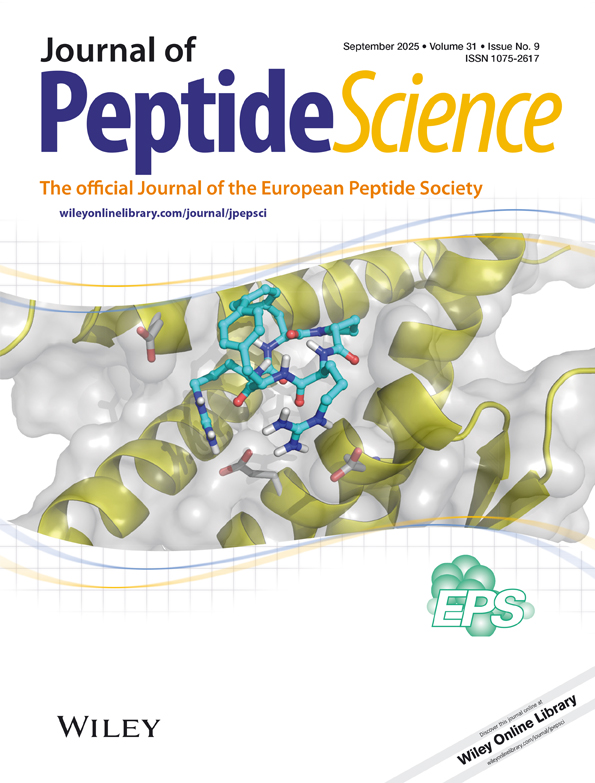Synthesis and biological characterization of human monocyte chemoattractant protein 1 (MCP-1) and its analogs
Abstract
Novel analogs of human monocyte chemoattractant protein 1 (MCP-1) were designed, synthesized and characterized to be used as tools to generate monoclonal antibodies as potential human therapeutics. MCP-1 and three analogs were synthesized by step-wise Fmoc solid phase synthesis. After oxidation to form the two-disulfide bonds, affinity chromatography using an immobilized mouse anti-human MCP-1 monoclonal antibody (mAb) was utilized for a simple and highly effective purification procedure for the proteins. The final products were extensively characterized and compared with recombinant human MCP-1 (rhMCP-1). All proteins showed identical binding with mouse anti-human MCP-1 mAbs as measured by surface plasmon resonance. Synthetic MCP-1 and the analogs were comparable to recombinant MCP-1 in competition radio-ligand binding to CCR2 receptors on THP-1 cells, and MCP-1-induced, calcium mobilization and chemotaxis assays. Copyright © 2005 European Peptide Society and John Wiley & Sons, Ltd.




